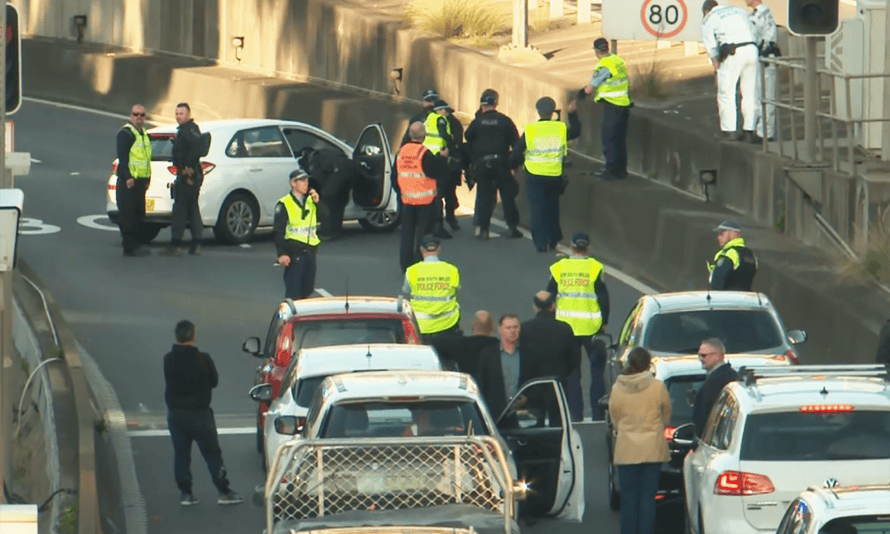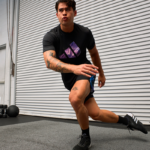
2021 census: first wave of data released today

Caitlin Cassidy
Cast your mind back to last August and you probably remember filling out the census, alongside millions of other Australians.
The first and biggest release of this year’s census is out today. It’s the first time since 2016 that Australians will have up-to-date data on where we live, who we are and what we do. It’s a mammoth task to wade through, and takes months to collate.
The 2021 census was completed during the Covid-19 pandemic, when many Australians were in lockdown and working from home and overseas migration had largely halted.
Questions were asked about two new topics – long-term health conditions and service in the Australian defence force.
It’s also the first time “non-binary”was offered as an option to report a person’s gender.
The question directly feeds into the official estimates of Australia’s population, making it one of the questionnaire’s most important questions.
While it should provide a more accurate snapshot of Australia’s LGBTQ+ community than in the past, when “other” was the only option apart from male or female, the Australian Bureau of Statistics has been criticised for neglecting to provide additional categories for people who are transgender or intersex.
An official count won’t be published in the first release. An ABS spokesperson said in a statement:
Later this year, the ABS will be doing more analysis on non-binary sex responses and … working in consultation with key stakeholders in the LGBTQ+ community to understand the complexities, data quality and usefulness of the data.
At this time, the ABS will be publishing our findings and looking ahead to the next Census.
Most topics will be released on Tuesday. Almost all geographic data will be published, as will the answers to questions about ancestry, religion, unpaid work, income, birthrates, family relationship makeups and residence details.
In October the answers to employment questions will be released, while in early to mid-2023 the ABS will release “complex topics” that required additional processing, including socioeconomic indexes and homelessness estimates.
A growing number of Australians identify as Indigenous, census data shows
There are 812,728 people who identify as Aboriginal or Torres Strait Islander in Australia, equal to 3.2% of the population, reflecting an increase of more than 25% since census data was last collected in 2016.
Nearly 48,000 are aged 65 years and older, more than doubling those in the 2011 census.
The statistics also report for the first time on the number of Indigenous Australians who have served in the defence force. More than 3,000 serving members identify as Indigenous, totalling 3.7%. There are 11,000 former ADF members who identify as having Aboriginal or Torres Strait Islander heritage.
Language remains an important part of many Indigenous households, with more than 78,000 people speaking traditional language at home.
Of the 167 traditional languages spoken at home in 2021, the most widely reported were Arnhem Land and Daly River region languages, Torres Strait Island languages, Western Desert languages, Yolngu Matha and Arandic.
Of the Indigenous population, 91.4% identified as Aboriginal, 4.2% identified as Torres Strait Islander, and 4.4% identified as both.
We’ll get into the nitty gritty of the census data over the course of the day, but here are some fast facts:
- The national population in 2021 grew by about 2 million people since the last census in 2016 to 25.4 million.
- Due to the impacts of the pandemic, 2 million more people were at home on census night in 2021 compared with in 2016. Of those who completed the census, 96% did so at their own address.
- Covid led to an 80% decrease in the number of overseas visitors, with 61,860 in 2021 compared with more than 315,000 in 2016.
- More than a million new migrants arrived in Australia since 2017, according to the census, but about 80% of them arrived before the pandemic.
Blockade Australia protests set to continue today
Activists protesting climate inaction by blocking Sydney streets this week plan to continue, even as 10 protesters were arrested on Monday, including a 22-year-old woman who chained herself to the steering wheel of her car at the entrance to the Sydney Harbour Tunnel.
Blockade Australia spokesman Jonah Shabtay told AAP the protests were designed to demonstrate the effects of the collapse of the climate:
[The protests are] really for making it quite known and unavoidable that disruption is going to come from climate collapse, in which Sydney’s economy is largely responsible. In order to respond to that we’re choosing to disrupt the city.
Shabtay said the group had moved away from its previous tactic of targeting ports and was focusing on roads in Sydney’s CBD:
It’s essentially going to be traffic disruptions that we’ll see throughout the week.

The NSW police minister, Paul Toole, has labelled them “professional pests”. Speaking to Nine on Tuesday, Toole said:
I’m furious. The public are furious. These are professional pests. These people say that they are out there trying to actually protect the climate but yesterday what they were doing was littering all over Sydney.
Seven of the activists were refused bail. They face multiple obstruction and disruption charges and will appear in court on Tuesday.
Federal environment minister Tanya Plibersek says Australia has had a “fantastic” reception at the UN Ocean Conference in Portugal, which she addressed yesterday, heralding the announcement of five new “blue carbon” projects this week.
She was asked her opinion of the Blockade Australia climate crisis protests in New South Wales this week, and the widely criticised, very punitive anti-protest legislation that came into force in that state earlier this year.
Plibersek said she understood people felt strongly about climate crisis but that they needed to obey the law:
I support the right to protest. I think people need to protest within the bounds of the law … I have been part of organising a lot of rallies in my life and it was always pretty standard practice to negotiate with police on the route of the march …
You have a right to make your views known, you don’t have the right to break the law to do that.
She also spoke briefly about abortion rights in Australia, in the wake of those rights being rolled back in the United States, saying it was important for the government to be supporting “the full suite reproductive health [measures] for Australian women”, including sex education, contraception, and safe, legal abortion.
2021 census: first wave of data released today

Caitlin Cassidy
Cast your mind back to last August and you probably remember filling out the census, alongside millions of other Australians.
The first and biggest release of this year’s census is out today. It’s the first time since 2016 that Australians will have up-to-date data on where we live, who we are and what we do. It’s a mammoth task to wade through, and takes months to collate.
The 2021 census was completed during the Covid-19 pandemic, when many Australians were in lockdown and working from home and overseas migration had largely halted.
Questions were asked about two new topics – long-term health conditions and service in the Australian defence force.
It’s also the first time “non-binary”was offered as an option to report a person’s gender.
The question directly feeds into the official estimates of Australia’s population, making it one of the questionnaire’s most important questions.
While it should provide a more accurate snapshot of Australia’s LGBTQ+ community than in the past, when “other” was the only option apart from male or female, the Australian Bureau of Statistics has been criticised for neglecting to provide additional categories for people who are transgender or intersex.
An official count won’t be published in the first release. An ABS spokesperson said in a statement:
Later this year, the ABS will be doing more analysis on non-binary sex responses and … working in consultation with key stakeholders in the LGBTQ+ community to understand the complexities, data quality and usefulness of the data.
At this time, the ABS will be publishing our findings and looking ahead to the next Census.
Most topics will be released on Tuesday. Almost all geographic data will be published, as will the answers to questions about ancestry, religion, unpaid work, income, birthrates, family relationship makeups and residence details.
In October the answers to employment questions will be released, while in early to mid-2023 the ABS will release “complex topics” that required additional processing, including socioeconomic indexes and homelessness estimates.
Good morning
Good morning, folks, welcome to this chilly Tuesday.
Prime minister Anthony Albanese is in Madrid, Spain, for the Nato summit which will focus on the Russian war on Ukraine and its relationship with China.
Albanese confirmed on landing that he had also spoken with the Solomon Islands prime minister, Manasseh Sogavare, and had a “very constructive” conversation. We’ll hear more about both of those things over the course of the day.
The Australian Bureau of Statistics has released the first tranche of data from the 2021 census. It covers topics such as housing, languages spoken, Indigenous health and education, employment, religion and paid and unpaid work. We’ve got stacks of analysis on that to bring you this morning.
Industrial action will sweep New South Wales this week beginning with the Rail, Tram and Bus Union who are kicking off today with a “go-slow”, which means train drivers will limit their speeds to 60km/h or under, likely reducing services up to 50% in peak times. It’s the first of four days of rolling action against what they say are unsafe trains.
Nurses and midwives will also take action this week, with a planned walk-off for between one and 24 hours on Tuesday and a mass meeting held in Sydney’s CBD from 2pm. It will be the second time they have gone on strike in recent months.
We’ve got heaps more to bring you over the day. If you see something newsworthy or interesting over the day, send me an email at stephanie.convery@theguardian.com or ping me on Twitter @gingerandhoney.
Ready? Let’s get stuck in.


